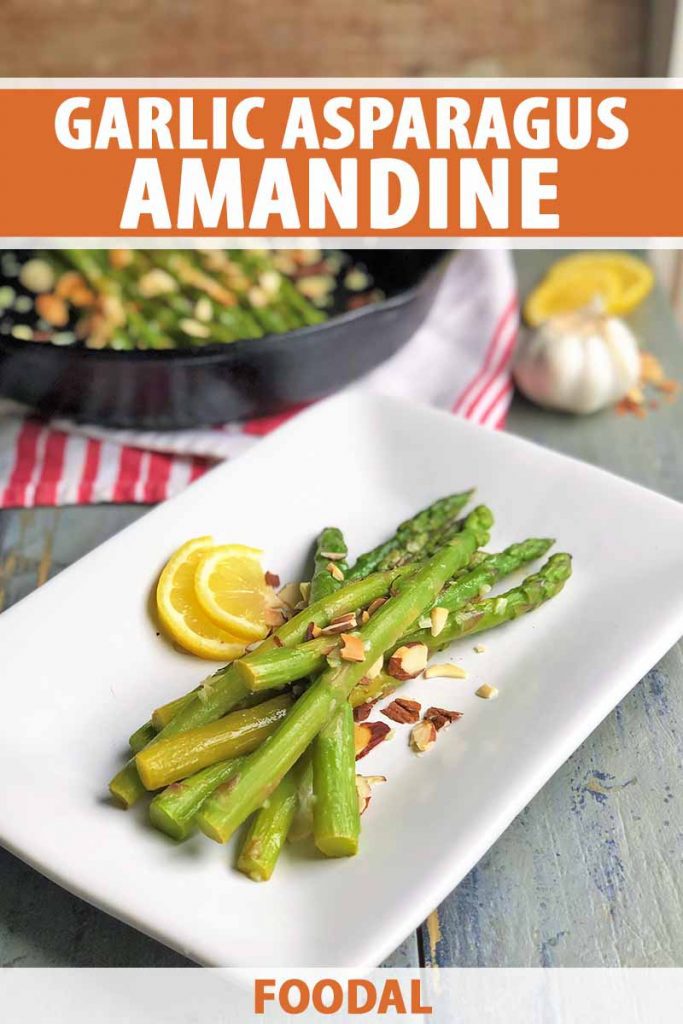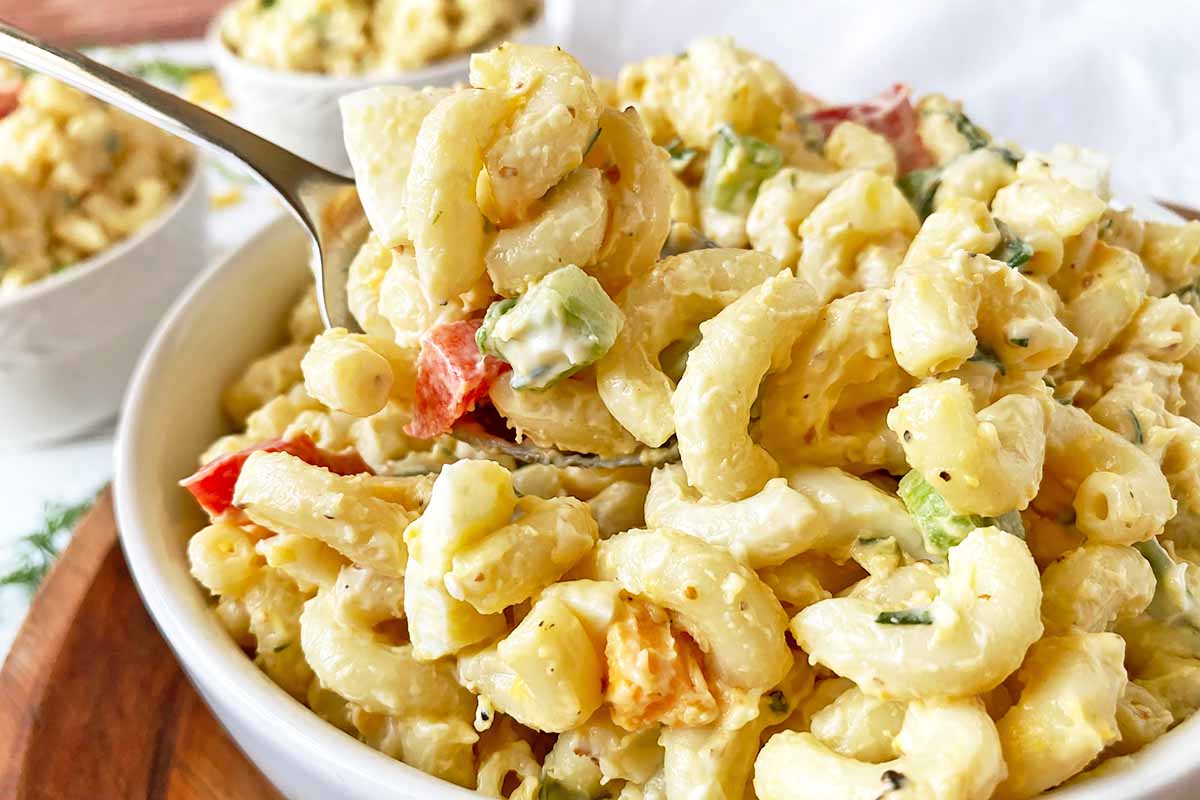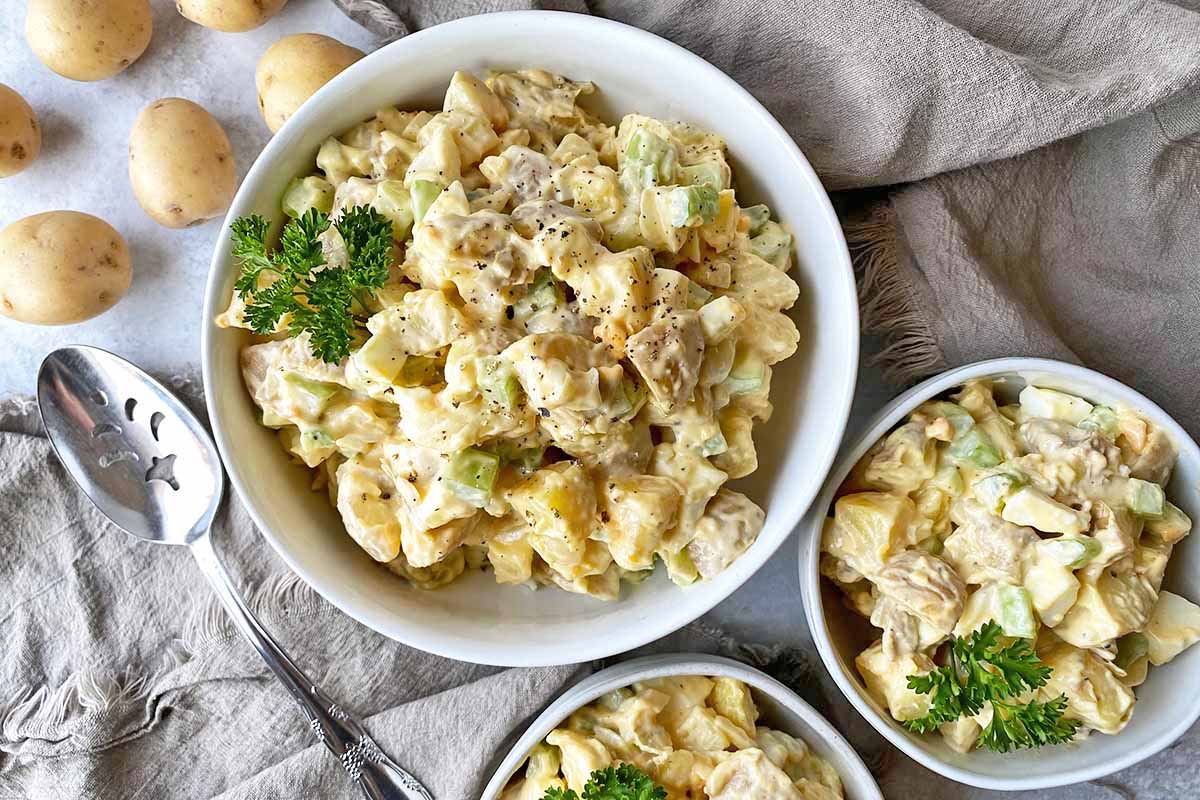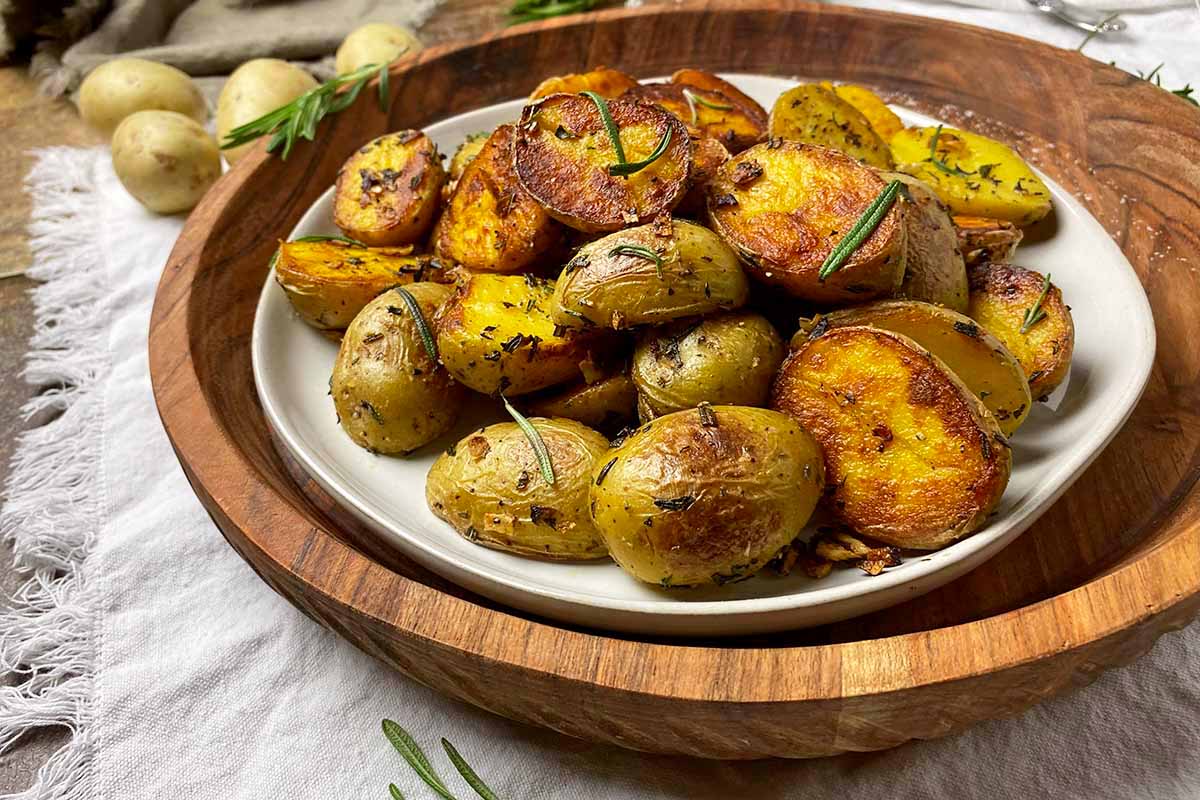I don’t know about you, but I believe asparagus is one of the most underrated vegetables of all time.
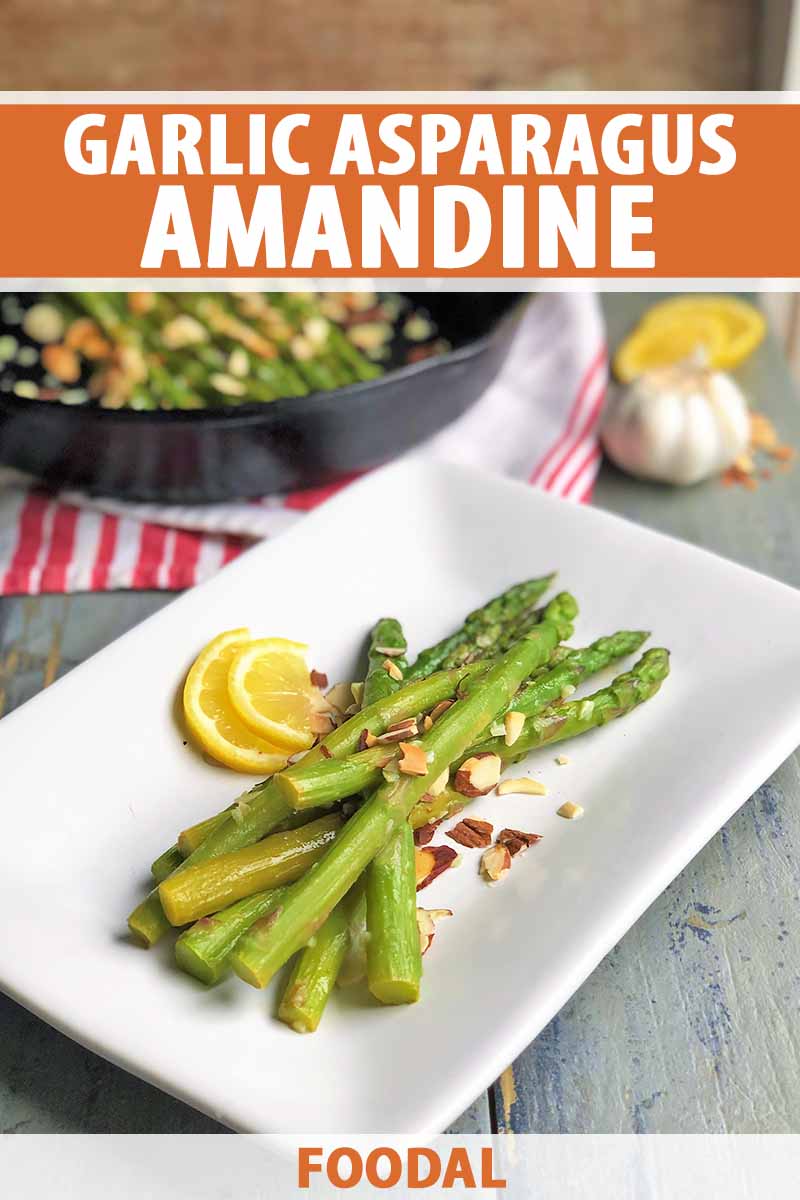
Not only are the stalks versatile and unbelievably quick-cooking, but they’re wildly easy to prepare in bulk as well, so if a few extra friends drop by for dinner, everything is still under control.
When it comes to these green spears, there’s really only one trick I need to share with you. It’s something my dad taught me at an early age, so rest assured that I’ve had the following method mastered for well over thirty years, and am now a professional.
It’s not so much a “trick,” per se, as it is an approach.
Okay, are you ready?
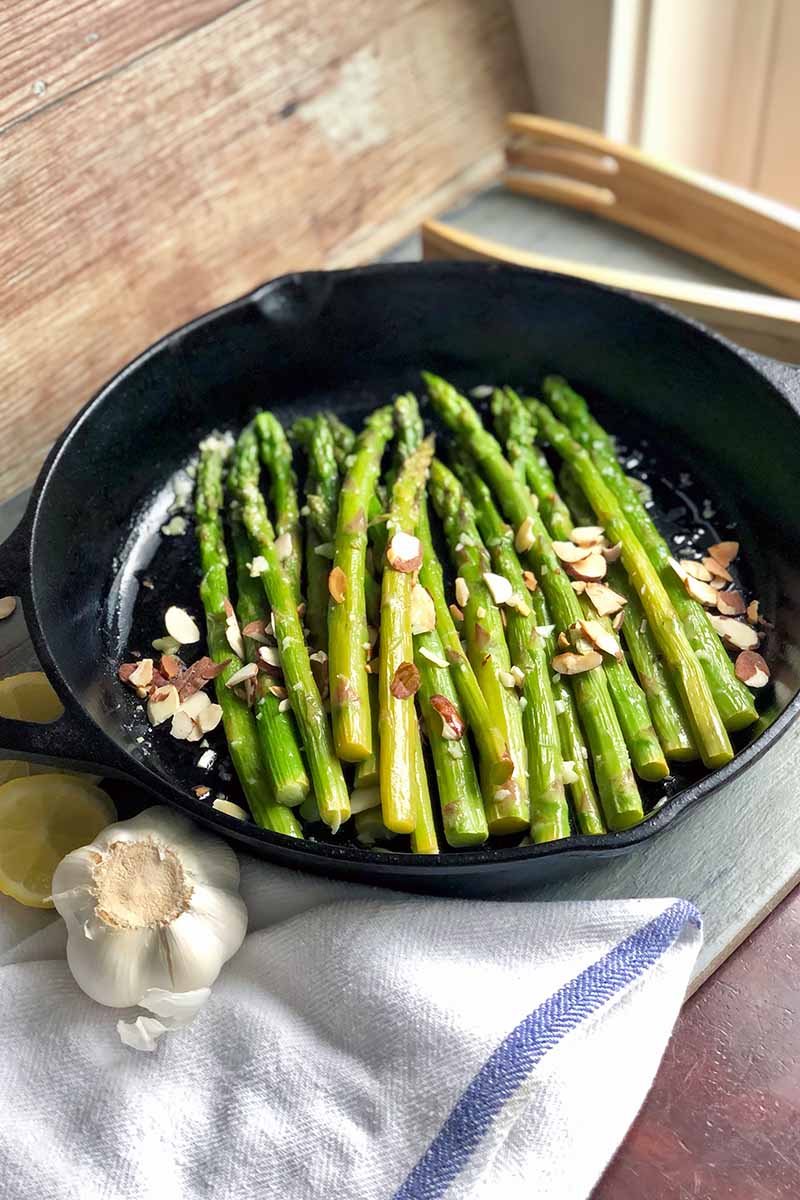
The proper method for eating ‘gus (as it’s known in our house) is to tilt your head back so your eyes are facing the ceiling, dangle a verdant stalk directly above your mouth, and gently lower it in until it disappears.
Maybe it is a trick, after all?
With this newly absorbed knowledge, you have now officially graduated from the Slater Conservatory of Culinary Etiquette. You may pick up your diplomas after dessert.
But in all seriousness, other than agreeing to consume your food with a sense of joy and silliness, and agreeing to deal with the potentially smelly consequences we can all laugh about, the real secret to master with this slender veg is proper cooking technique.
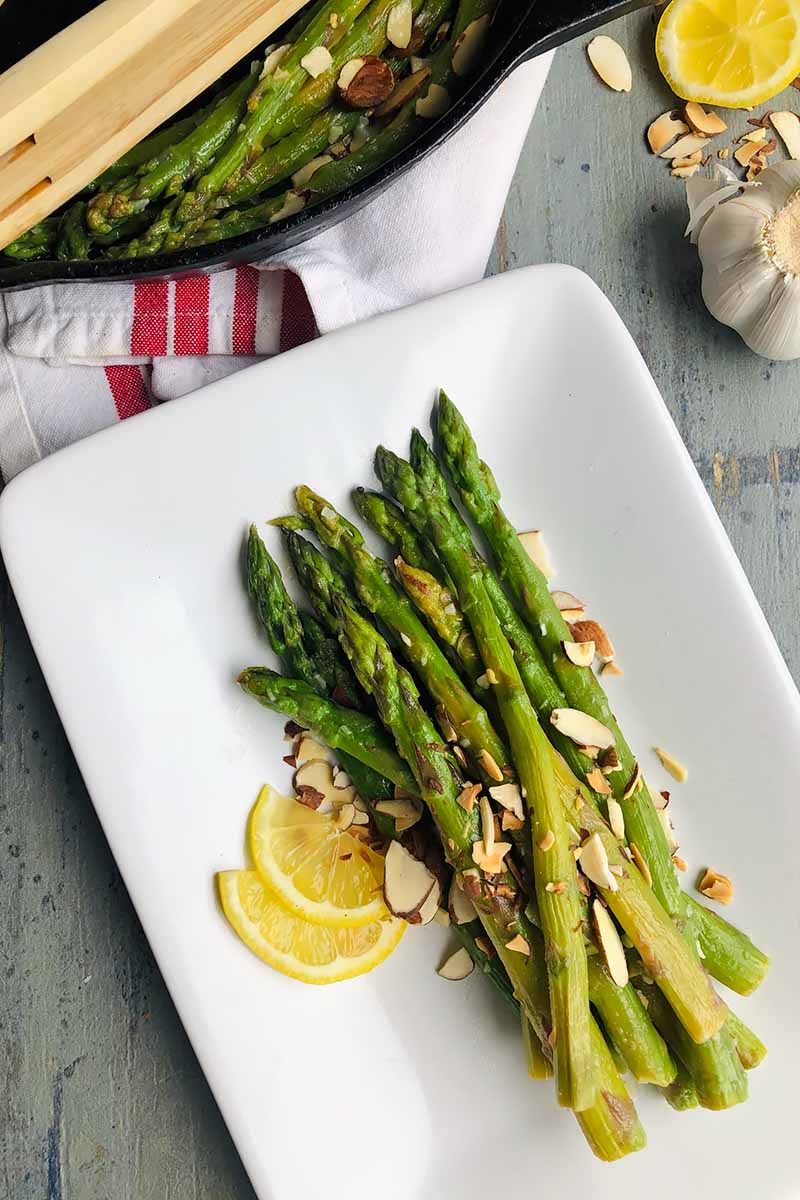
Unfortunately, like snowflakes, every asparagus (aspara-guy?) is unique in its proportions. Some are super thin and flimsy, while others have thick trunks that take a bit more finesse to prep.
Well, not necessarily finesse. Cooking time.
All stalks are not created equal, yet they should all be treated delicately. Of course, there are various methods you can use that will take the this vegetable on its journey from raw to perfectly tender.
Roasting or steaming can do the trick. If it’s smokiness you’re after, throwing them on the grill is a grate idea. But I prefer the blanch-and-saute combo above all.

I have a friend who only cooks asparagus in her cast iron pan with no blanching involved, just a quick saute in olive oil. Though I tend to think something is lacking if a cook fails to immerse the spears in simmering liquid at some point in the cooking process, hers always end up brilliantly crisp-tender, and full of charred flavor from the pan.
But I enjoy blanching. When paired with a quick dip in an ice bath afterwards, the process enhances a veggie’s color, and can help to remove any excess grit or surface level bacteria as well.
According to my recipe, this process cooks the stalks a little more than halfway, so all they need afterwards is a quick roll around in a garlicky butter bath.
Count me in!
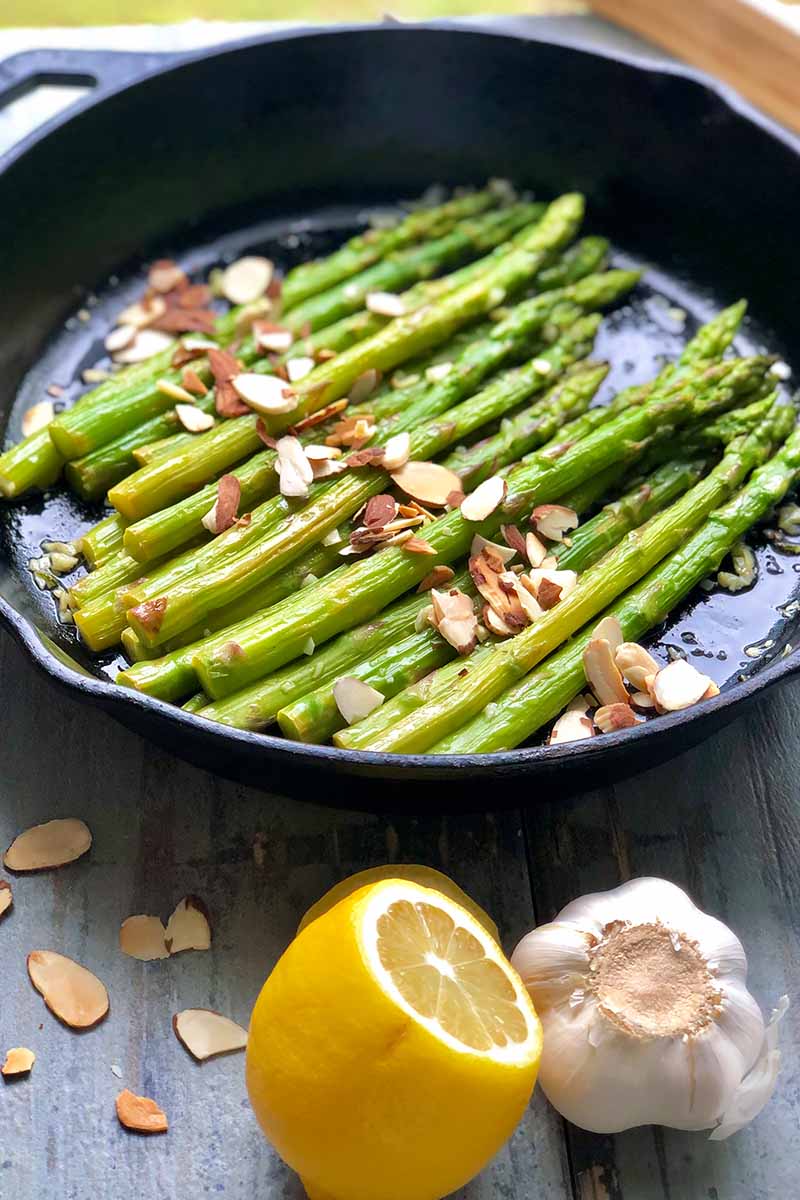
You could stop there, but deglazing the pan with a squeeze of lemon juice brings some acidity and pulls any garlic bits from the bottom. Believe me, you don’t want to leave any of those behind.
Unless it’s slightly underdone or served raw, this veggie isn’t exactly known for its crunch, so toasted almonds give each bite a nutty, slightly bitter note and contrasting texture that keeps things interesting.
Just remember, if you’re utilizing the Slater family ‘gus formula with this specific recipe, you may end up with some stray almonds bouncing off your face. Choose your pants wisely, and employ a napkin or apron if you so desire.
Print
Garlic Asparagus Amandine
- Total Time: 15 minutes
- Yield: 2-4 servings 1x
Description
For a quick side dish that’s satisfying and savory, try this asparagus bathed in butter and garlic, and garnished with toasted almonds. Get the recipe now.
Ingredients
- 1/4 cup sliced almonds
- 1 bunch asparagus (about 1 pound), tough ends trimmed
- 3/4 teaspoon coarse salt, divided
- 1 tablespoon unsalted butter, divided
- 1 large clove garlic, minced
- 1 tablespoon fresh lemon juice
Instructions
- Add the almonds to a large, dry skillet and place it over medium-low heat. Shaking the pan and tossing the almonds occasionally to promote even browning, cook until golden and lightly toasted, about 5 minutes. Remove from the pan and set aside.
- Bring a medium-sized pot of water to a boil and prepare a large bowl of ice water nearby.
- Add 1/2 teaspoon salt and the asparagus to the boiling water. Blanch the asparagus until slightly softened and vibrant green, about 1 minute (or 90 seconds if the stalks are particularly thick).
- Immediately transfer them to the ice bath for 1 minute (which shocks them and stops the cooking process). Remove the asparagus from the ice water and pat them dry.
- Add the butter to the skillet you toasted the almonds in, place over medium heat, and swirl to coat the pan. When the butter begins to foam and sizzle, add the garlic and asparagus. Saute until the garlic is very fragrant and the asparagus is crisp-tender, about 2 minutes.
- Add the lemon juice and remaining 1/4 teaspoon salt. Toss to coat.
- Transfer to a serving platter, top with the toasted almonds, and serve.
- Prep Time: 5 minutes
- Cook Time: 10 minutes
- Category: Vegetables
- Method: Stovetop
- Cuisine: Side Dish
Keywords: garlic, asparagus, amandine, almond, butter
Cooking By the Numbers…
Step 1 – Toast the Almonds
Add the almonds to a large, dry frying pan. Place on medium-low heat.

Shaking the pan and tossing the almonds occasionally to promote even browning, cook until they are golden and lightly toasted. This will take about 5 minutes.
Set the nuts aside on a plate so they are completely off the heat. Reserve the pan.
Step 2 – Prep and Blanch the Vegetable
Bring a medium-size pot of water to a boil and prepare a large bowl of ice water nearby. The ice bath is used to “shock” the spears, meaning the cold temperature will stop the cooking process after blanching.
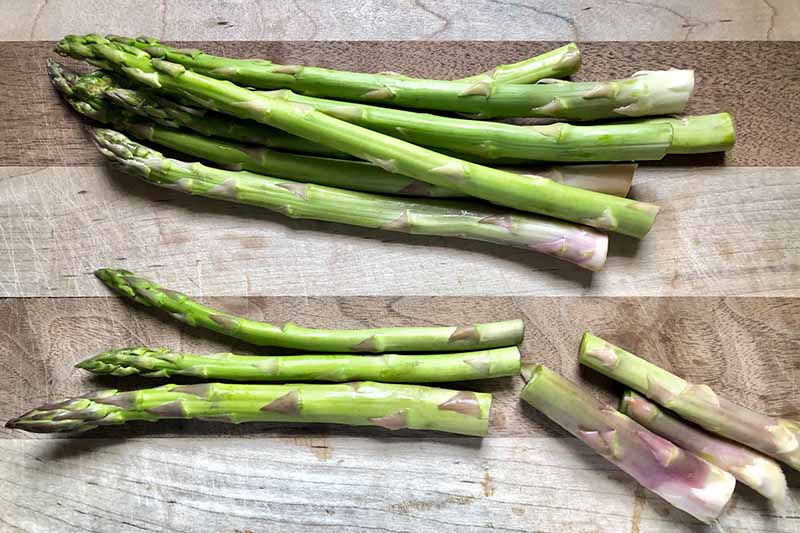
To properly trim the thick ends of the spears, hold one spear firmly on both ends and gently bend it by pulling the ends towards you. It will snap off at the point where the woody and tough end meets the tender remainder of the spear.
You can do this with every spear, or use one as an example and then trim all of the ends around the same spot for the rest of the bunch.
Once the water comes to a boil, add 1/2 teaspoon of the salt and the prepped spears.
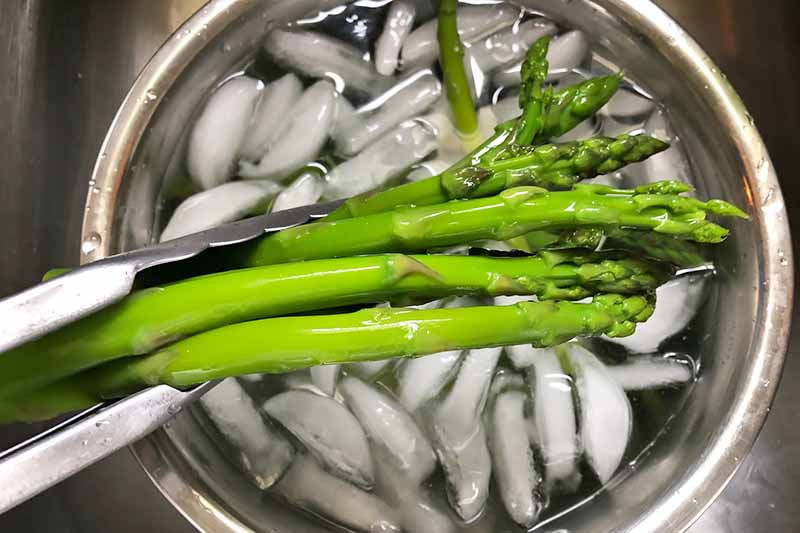
Blanch the spears until they are slightly softened and vibrant green, for about 1 minute (or 90 seconds if the stalks are particularly thick).
Immediately transfer them to the ice bath for 1 minute, which shocks them and stops the cooking process. Remove the spears from the ice water and pat dry.
Step 3 – Mince the Garlic, Juice the Lemon, and Saute the Spears
Mince the garlic and juice the lemon. Remove any seeds.
In the skillet where you toasted the almonds, add the butter and place over medium heat to melt. Swirl to coat the pan.
Once the butter begins to foam and sizzle, add the garlic and the blanched spears.

Saute until the garlic is very fragrant and each stalk is crisp-tender, about 2 minutes.
Toss the vegetables with the lemon juice and remaining 1/4 teaspoon salt, and then transfer to a serving platter.
Step 4 – Garnish and Serve
Top with the toasted almonds, and serve alongside your choice of main entree and additional sides.
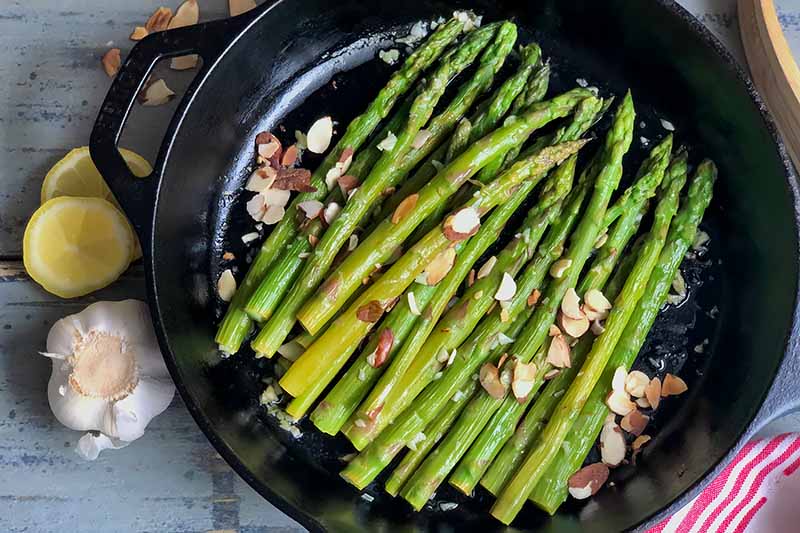
The Almighty Asparagus
Although there’s not much you can do to make this delicious amandine recipe even more sublime, a lemon garlic brown butter bath is always a great backup to have up your sleeve.
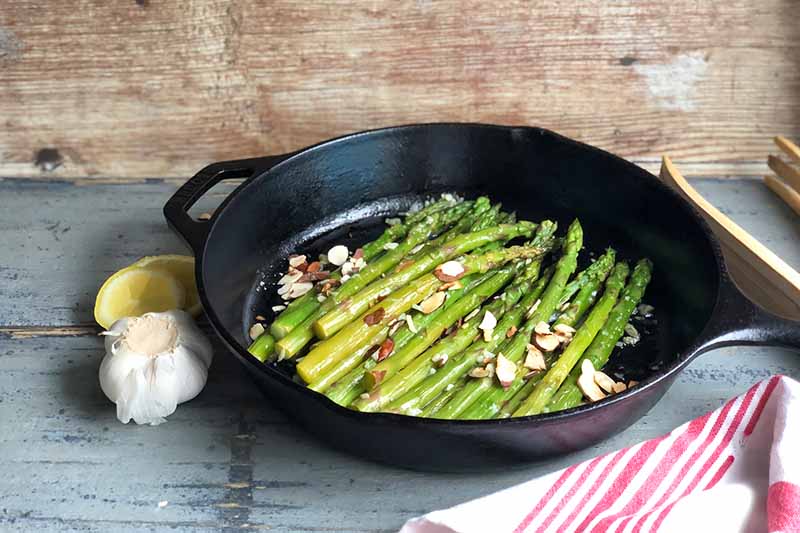
Instead of melting the butter and adding in the garlic immediately, cook the butter for several minutes until it’s lightly toasted, then whisk in the garlic and lemon juice off the heat. The brown butter’s nuttiness will mirror the taste of the almonds, and all will be right with the world.
If there’s slim pickings for this particular veggie at the market, grab some green beans instead, and soldier on with your new blanch-and-saute skill set.
What other deliciousness can you devise with almighty asparagus? Give these recipes showcasing the stalky sensations a try next:
What meals do your remaining spears migrate over to? Fluffy frittatas? Pasta? Share your leftover concoctions in the comments below! And don’t forget to give this recipe a five-star rating if you loved it.
Photos by Fanny Slater, © Ask the Experts, LLC. ALL RIGHTS RESERVED. See our TOS for more details. Originally published by Shanna Mallon on April 9, 2014. Last updated on Jun 19, 2021.
Nutritional information derived from a database of known generic and branded foods and ingredients and was not compiled by a registered dietitian or submitted for lab testing. It should be viewed as an approximation.
About Fanny Slater
Fanny Slater is a home-taught food enthusiast based in Wilmington, North Carolina who won the “Rachael Ray Show” Great American Cookbook Competition in 2014, and published her cookbook “Orange, Lavender & Figs” in 2016. Fanny is a food and beverage writer, recipe developer, and social media influencer. She was a co-host on the Food Network series “Kitchen Sink,” was featured on Cooking Channel’s longtime popular series “The Best Thing I Ever Ate,” and continues to appear regularly on the “Rachael Ray Show.”

